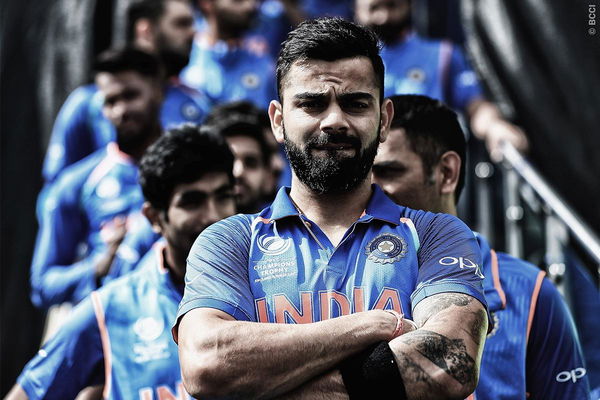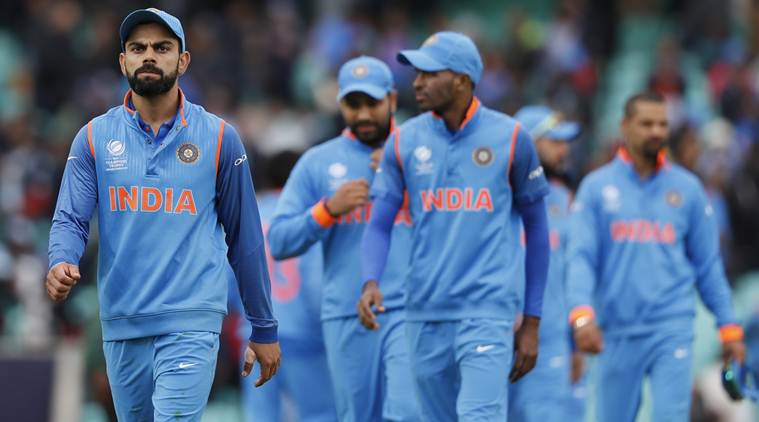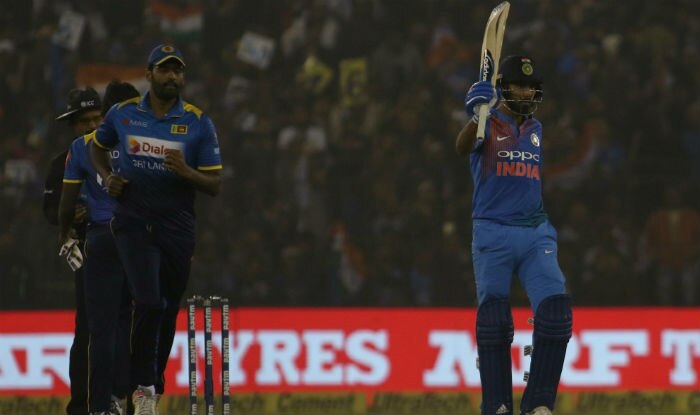


via Imago
The Indian Express
While we are concentrating on the biggest weak spots India has been embracing on we must consider what these men in blue have been indulging on these days. We all know recently there was a hastily organized series against Sri Lanka where the mighty Indians came out?mightier. This dominant stance of Indians turned achievable wiping out the Lankan’s at all possible ends. Now the question arises whether was it meant to prepare the Indian team for the imminent tour of South Africa? If that was the motive it could be said that the exercise has been a ?glorious? failure.
ADVERTISEMENT
Article continues below this ad
Where exactly is the Indian team lacking?

via Imago
SportsCafe
Glorious in the sense of considering the whole series as a phantasmagorical experience. The South Africans could really come hard at the Indian team during the away series starting in a few days? time. With South Africa?s fast bowlers getting into the thick of the action all these easy six-hitting run feasts, record-making centuries and clutch of wickets could turn into a distant dream for Indians.
Frankly, the bloated results of an opponent simply exemplify their status in modern day cricketing spectrum. Their loses by 93 runs in the first T20I and then by 88 runs in the next game surely highlighted the most of it. T20 matches simply speak for close affairs. The large margin one-sided victories are simply the exception, not the norm.
What is India’s anxiety all about?

via Imago
deccanchronicle.com
Particularly worrying is that India has registered these huge wins despite being disadvantaged by having to bowl second with a wet, dew-soaked ball.
But for the slippery nature of these wet balls, India?s bowlers and fielders? performance would have been far more emphatic. And that?s the terrifying thought: India has been preparing to go to war against men by sparring with mere toddlers!
The margins of victory are the giveaway. Imagine what would have been the extent of damage if India?s bowlers had gone after the Lankans with a dry ball! The defeat would have been as inglorious as those suffered by Kenya, who lost by 172 runs; Scotland, who faced the defeat by 130 runs; Afghanistan, who also embraced loss by 116 or even Canada, who at last surrender themselves by 109 runs!
None of them are cricketing nations and their loss by massive margins to Test-playing nations could only fall under the expectations.
But Sri Lanka too losing as miserably to India cannot be good for Indian cricket itself. It smacks of preparing the players against weak opposition. There is a guaranteed fact that this victory can lull the team into a false feeling of superiority. Of course, all such feeling will quickly disappear in South Africa, but not before the team members are woken up by a rude shock.
Blasting Dale Steyn or Morne Morkel or Kagiso Rabada, or even Vernon Philander, out of the park will be distinctly a more challenging prospect than hammering slow medium pace merchants Angelo Mathews or Thisara Perera. The latter set of bowlers were innocuous while the Proteas would be express-fast and would threaten to knock the batsman?s head off with ferocious bouncers.
India’s series against Sri Lanka, A blessing or a curse??

via Imago
Cricket Addictor
It is in this context that India?s matches against Sri Lanka have not prepared the Indian teams for the hard knocks which are very common in South Africa.
India?s preparation on low-bounce pitches will face its exposition almost immediately on the upcoming tour. The bouncier South African tracks will lead to the ball hitting the splice of Indian batsmen?s willow rather than the sweet spot. Therein lies the start of the issues.
There was an argument that the Indian team could have prepared bouncy tracks at home. But then Lanka don?t have bowlers of express speed. And asking the slow medium pace bowlers Perera and Mathews to bowl on bouncy tracks would be as corny as driving a Formula One car on Bengaluru?s pot-holed and overcrowded roads.
Friday?s match was just as ridiculous. Of course, it is not the Indian team?s fault that they got to fight against such an effete opposition. They did what everybody expected from them. They simply thrashed the Lankans in all matches. But slamming 260 for five wickets in 20 overs in the second T20I at Holkar Stadium was a bit rich. That total turned into a monstrous run rate of 13 runs per over. It is unimaginable that South Africa?s pacemen would ever face such treatment in a similar vein by the Indian batsmen.
ADVERTISEMENT
Article continues below this ad
What distinguishes Sri Lankans from South Africans?

via Imago
India.com
Mathews, Chameera, and Perera were pedestrian in their approach and delivery. They bowled full tosses, half-volleys, short-pitched deliveries. And they also made an assortment of other poor deliveries whom Indians carted around the field. Rohit Sharma and KL Rahul were, at one stage, targeting the first floor of the stands for the big hits. And on the other end, the Lankan bowlers got nothing to do about it. This is an unheard of luxury in international cricket when fast bowlers usually hunt down batsmen with venom.
On Friday, peculiarly there was a role reversal: the India batsmen went after the bowlers and the latter simply collapsed.
ADVERTISEMENT
Article continues below this ad
The win was not just a one-sided result. It was an indictment of the sort of opponents lined up for the Indian team prior to its challenging tour of South Africa.
These facile wins over Sri Lanka, pleasing though they might seem, are hardly the recipe for success in South Africa. On the other hand, these victories might have just papered over cracks. Well, very soon we all will be aware of what exactly India’s unconquerable spree is going to face in January.
ADVERTISEMENT
ADVERTISEMENT
ADVERTISEMENT
ADVERTISEMENT

